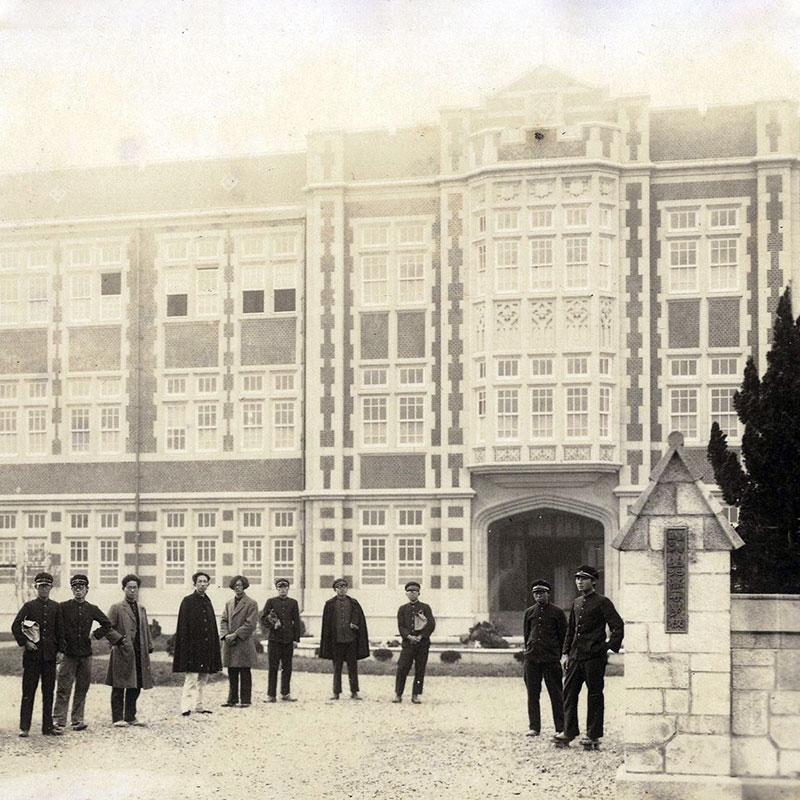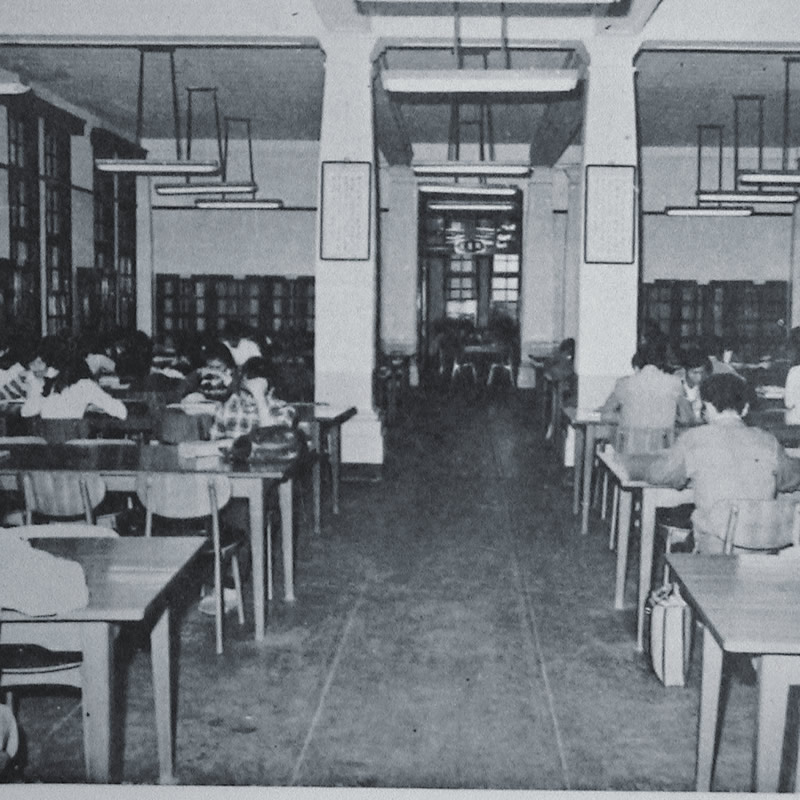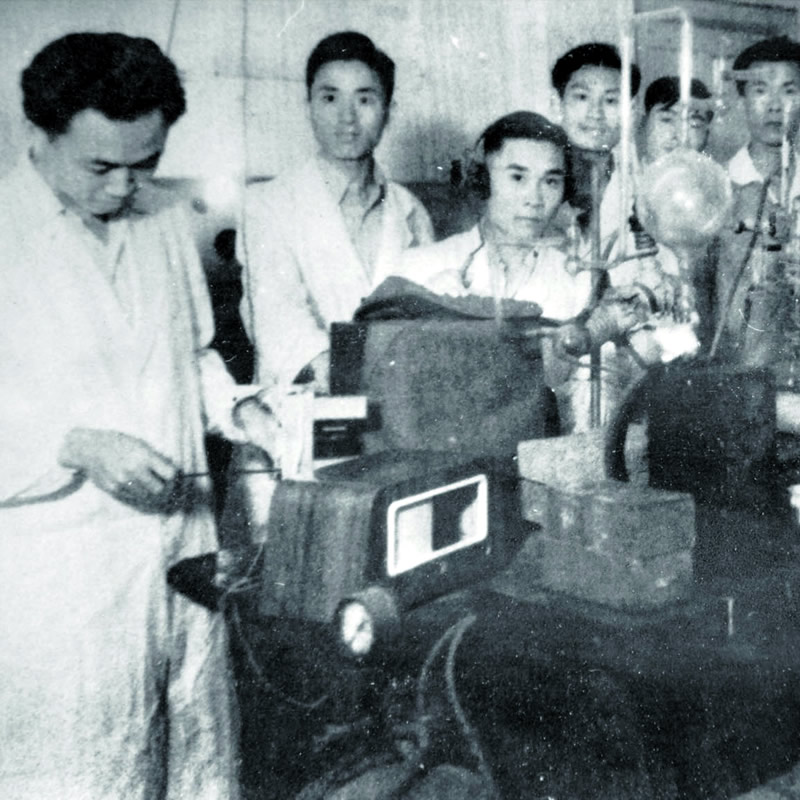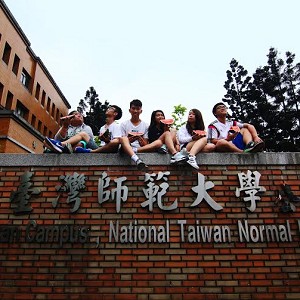History
Founded
Departments
-
1922 - 1945

Bringing about knowledge and enlightenment - The Founding Period
Taihoku High School under the Government-General of Taiwan
Taihoku High School under the Government-General of Taiwan (usually simply referred to as Taihoku High School) was the predecessor of National Taiwan Normal University. Founded in 1922 during the Japanese colonial era, Taihoku High School offered a 7-year program (consisting of a 4-year general studies program followed by a 3-year advanced studies program). Prior to World War II, Japan had 38 elite high schools that prepared students for admission to Japan’s Imperial Universities, and Taihoku High School was the only such school in Taiwan. In general, graduates of Taihoku High School were offered admission to Taihoku Imperial University without having to take the entrance exam. (Taihoku Imperial University was one of Japan’s nine Imperial Universities; it later became National Taiwan University). When Taihoku High School was first founded, it had to borrow facilities from Taipei First High School due to the lack of own building. (Taipei First High School was still a junior high school at the time; it has since become Taipei Municipal Jianguo High School). Subsequently, in 1926, Taihoku Higher School was relocated to its present location in the Koteicho district in Taipei. At the end of World War II in 1945, the Republic of China took over the control of Taihoku High School. In November the same year, in accordance with the new educational system established by the government, the school was renamed as Taiwan Provincial Taipei High School (usually simply referred to as Taipei High School). -
June 1946 - June 1955

A growing sapling - The Development Period
Taiwan Provincial Teachers College
During the post-war period, Taiwan had an urgent need for qualified junior and senior high school teachers. Thus, on June 5, 1946, the Governing Council under the Province of Taiwan established Taiwan Provincial Teachers College, with a mission to train secondary school teachers. During the initial stage of the establishment of Taiwan Provincial Teachers College, it shared a campus and facilities with Taipei High School; even their faculty and staff held concurrent positions at the two schools. In 1949, an order was issued to Taipei High School that it stopped accepting new students. The order also stipulated that Taiwan Provincial Teachers College would inherit the land, facilities, books, and buildings of Taipei High School. The buildings inherited include four structures that are now recognized as historic structures, namely, the Administration Building, the Pu-Zi Building, the Auditorium, and Wen-Huei Hall. These historic structures constitute the classical splendor of National Taiwan Normal University today. -
July 1955 - 1967

The perfect season - The Prime Years
Taiwan Provincial Normal University
The school entered a new phase in 1955, when it was renamed as Taiwan Provincial Normal University, which consisted of three colleges—the College of Education, the College of Liberal Arts, and the College of Science. In addition to the training of future teachers, Taiwan Provincial Normal University was committed to research and the exploration of new knowledge. More opportunities were also provided to faculty for professional development and further learning. As a result, the school was able not only to improve the quality of the secondary school teachers nationwide, but also to deepen its commitment to research. In accordance with the changing needs of society, the school made adjustments to the departmental structure and embraced two responsibilities: training secondary school teachers, and providing a university education. -
From 1967 onwards

The eagle flies - The Breakthrough Period
National Taiwan Normal University
On July 1, 1967, the school received a further boost in its status when it was upgraded to become National Taiwan Normal University. It had four colleges—the College of Education, the College of Liberal Arts, the College of Science, and the College of Arts. Along with the change in status came an increase in funding, which enabled the university to improve its facilities and infrastructure. Not only did the university provide a more diversified teaching and research environment, it also provided better teaching, research, counseling and administrative support, among other things.
In 1994, with the implementation of the Teacher Education Act, Taiwan became more diversified when it came to the training of future teachers. To fit in with the times, National Taiwan Normal University also changed its course of development to become a more comprehensive university. In addition to its existing teacher training programs and departments, the university also established new departments in accordance with the needs of society and to help the school take the lead in the development of higher education. Currently National Taiwan Normal University has a total of nine colleges, in education, science, liberal arts, arts, sports and recreation, technology and engineering, international studies and social sciences, management, and music. National Taiwan Normal University is a diversified comprehensive university with over 10,000 students, including undergraduate, graduate and doctoral students.
In the future, National Taiwan Normal University will build on its strong foundation in the humanities, while also incorporating modern scientific knowledge. We will continue to improve on our strengths, while enhancing internalization, information and entrepreneurship. We want our current students to become the leaders of tomorrow. Our goal is to be a university that combines the classical spirit with a modern perspective. We aspire to become not only one of the best universities in Asia, but in the entire world.
